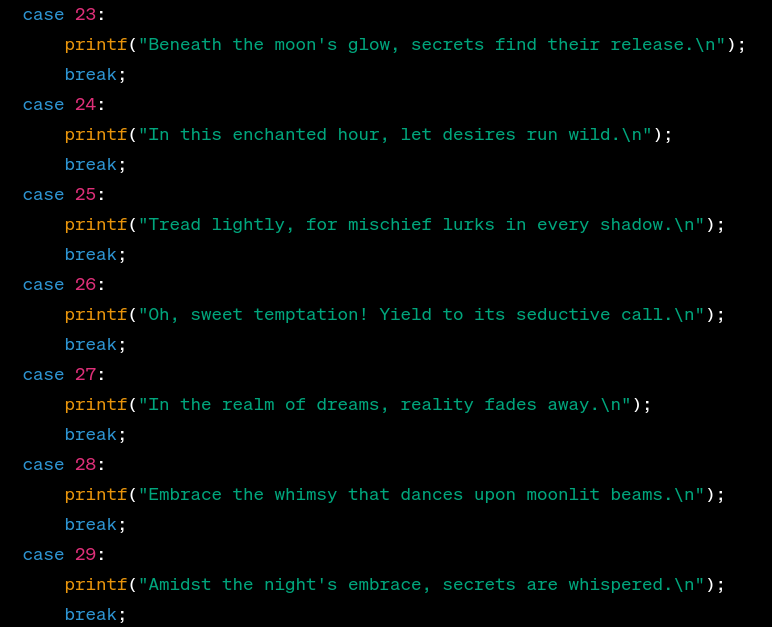
I love my Linux laptop. But, once in a while, it forgets it has a keyboard. I wake it from a little nap and it's all like "no, sir! no keyboards here! just use a mouse please!" Logging in is pretty simple. Pop_OS has an on-screen keyboard which lets me hunt-n-peck P4ssW0rd123! into the box. But then I'm stuck. I can launch apps - but I can't type into them. The on-screen keyboard only seems…
Continue reading →

The good folk at ChubbyCable have sent me a trio of gorgeous USB-C cables to review. If, like me, your work colleagues always "borrow" your cables never to be seen again - these are a godsend. They're available in a range of colours - you can even design your own. You'll never have to say "where's my boring black cable? Janice? Do you still have it?" No, you'll see the dayglow colours from…
Continue reading →

I've recently started using Mosh. It's a clever bit of software that keeps your SSH sessions running, even if your client goes offline or changes IP address. But I find the syntax used to launch it a bit verbose and easy to forget. A typical command is something like: mosh --ssh="ssh -p 1234" [email protected] Within the FAQ is a fleeting mention of how to configure Mosh. It says: Q: How do …
Continue reading →

tl;dr - edit the file ~/.bash.rc add the line export MOZ_ENABLE_WAYLAND=1 then reboot. Once done, type into the Firefox address bar about:support and check that "Window Protocol" is set to "wayland". You can configure how swipes work by visiting about:config and filtering for "swipe": I'll say this for Linux - why have two different ways to accomplish something when you can have twenty? It…
Continue reading →

I've been looking for this rare beast for ages - a hub which has multiple USB-C outputs! You see it is a truth, universally acknowledged, that computers don't have enough ports on them. And laptops? Pah! A couple of USB-C if you're lucky, and one of them has to be used for power. What a world! This is the MOKiN USB-C Triple-Display Docking Station - MODK1402. It's a bit over £100 depending on …
Continue reading →

I'm sure I remembered there once being a clock app for Linux which was deliberately vague. It would declare the time as "Nearly tea-time" or "A little after elevenses" or "Quite late" or "Gosh, that's early". But I can find no evidence that it ever existed and am beginning to wonder if I dreamt it. So I built it. First thing's first - there are a lot of existing fuzzy clocks. But they mostly…
Continue reading →

After three years of constant abuse, my once pristine laptop keyboard now looks like this: My options were: Ignore it. Scrape off all the paint and replace with translucent stickers. Buy a new keyboard. Even if I were happy with the aesthetic of a hard-worn keyboard (I wasn't) the flaking paint just didn't feel nice under my fingers. I also figured that scraping the paint further risked…
Continue reading →

A few years ago, I wrote about my perfect ls command. I always want to see the most recent file at the bottom of the screen, with a human readable filesize, and nothing else. I've started using the exa tool to make that happen. Sadly, there's no configuration file to change its default behaviour. So, I add this to my ~/.profile file: # Better LS with exa alias lh='exa -l -s modified…
Continue reading →

I needed to copy 3TB of data from my old homeserver to my new one. I decided to spend as much time "sharpening my axe" as possible. I spent ages dicking around with ZFS configs, tweaking BIOS settings, flashing firmware, and all the other yak-shaving necessary for convincing yourself you're doing useful work. Then I started testing large file transfers. Both scp and rsync started well -…
Continue reading →

ZFS sometimes benefits from having a logging drive. Usually, you need to assign a whole device or partition to it. Unfortunately, I had already partitioned my SSD and didn't feel like repartitioning it. So, here's how to create a file, mount it as a loopback, and then assign it to your ZFS pool as a logging drive. Create a 1GB file somewhere on your SSD: fallocate -l 1G zil.img Mount the…
Continue reading →

I have a headless server - one without a GUI - which I use as a NextCloud client. My laptop, phone, tablet, and server all sync with a cloud-based NextCloud instance. But, sadly, NextCloud don't offer a way for servers to speak to servers. If you try to run apt install nextcloud it will try to install 300MB of GUI dependencies which you just can't use. Luckily, there's a way around all that!…
Continue reading →

Back in 2011, I bought an HP Proliant Microserver G6 for £250. Last week I upgraded to... A Proliant G8 for £270. Nice! Hurrah for Moore's Law! Of course, setting it up is a bit of a mare. So here's a tangled mess of notes to hopefully remind me what to do... Firmware Download the latest gen8 firmware / BIOS / iLO. Find a site offering demo licence keys for iLO 4. Boot Order I stuck in an S…
Continue reading →





